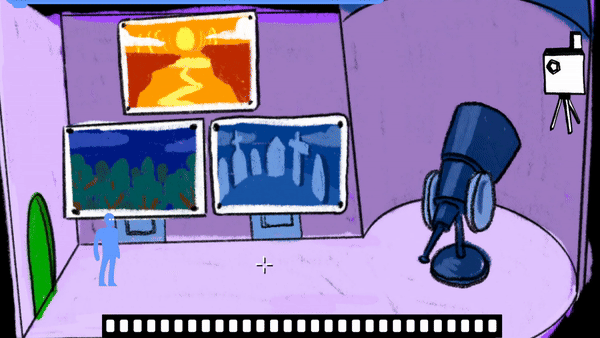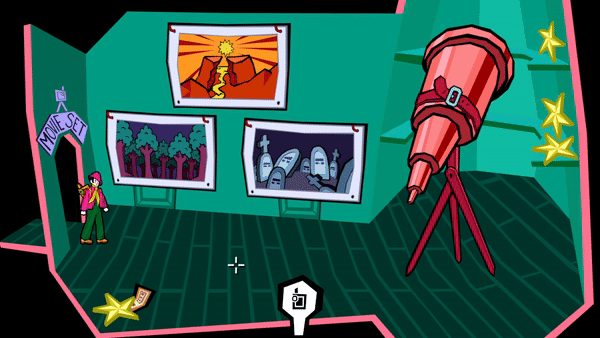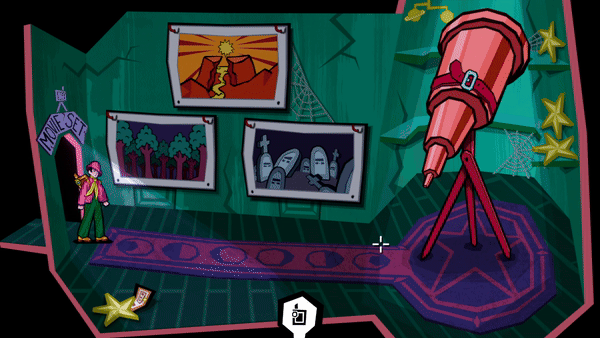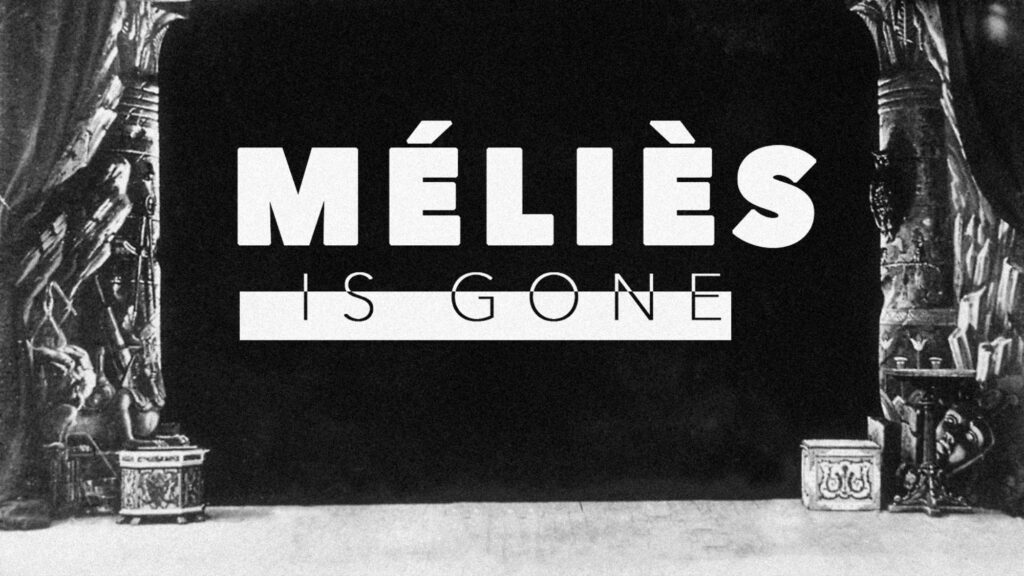Discover the teaser trailer for Méliès is Gone, beautifully illustrated by Jean-Rémi, and voiced by Audrey as Georgette!
a detective game about an ill-fated film
Discover the teaser trailer for Méliès is Gone, beautifully illustrated by Jean-Rémi, and voiced by Audrey as Georgette!
Remember the first two concept prototypes from Méliès is Gone?
They were built using premade 3D assets in Unreal Engine. Since then, we have worked hard, as we aim to create a full 2D experience with this game!
And now, as time has passed we can see our efforts coming to fruition!
Here’s how Méliès is Gone looked just one month ago, when the project was playtested:

Here’s how it looked like just two weeks ago, after

And here is how it looks today, after Jean-Rémi added many more details, and Maxime added visual effects to the game!

We’re getting really close to completing a first “vertical slice” prototype for Méliès is Gone! Stay tuned for more!
In this devlog entry, you’ll discover the second gameplay prototype for Méliès is Gone!
The game has changed a lot since then. Make sure to follow us to get all the news!
In this devlog entry, you’ll discover what the very first gameplay prototype for Méliès is Gone looked like!
The game has changed a lot since then. Make sure to follow us to get all the news!
Video version of the original pitch of Méliès is Gone!
It all starts in 1895… (text version here!)
As we start developing Méliès is Gone, it is important for us to document the creative process of this game. Hereafter you’ll find how it all began: Thibault original pitch for Méliès is Gone!
1895 : Two brothers from Lyon, France, The Lumiere brothers, invent the cinematograph. This wonderful, innovative tool allows, within the same machine, to both record and project moments of reality. They just launched a technological revolution ; they have just ushered animated images into a new era.
1902: Georges Méliès releases one of the most innovative films of his time: A Trip To The Moon. This engineer and illusionist sees in the cinematograph the possibility of transfiguring his magical art into a new art, fully anchored in the emerging 20th century. On his family’s domain in the town of Montreuil, he builds the world’s very first movie studios. There, over the course of a few years, he shot hundreds of scenes rivaling ingenuity and poetry. He has just brought to life an artistic revolution; he has just invented cinema.
1929: In a few decades, cinema has become an industry. Hollywood has made it a popular art, bringing together millions of people around the world. Yet, its inventor is forgotten by all. Worse: Méliès has disappeared… Méliès is Gone!

Méliès is Gone is a detective game in which you play as a private detective hired by George Méliès’ daughter to investigate her father’s disappearance. You go to the Méliès family property, and learn that the filmmaker was last seen in the studios. He was working on a final movie, a movie that was to reveal to the world a secret that only he knew about cinema. You enter the studio, left abandoned, you make your way through the dilapidated sets and worn-out costumes. You then come across a reel of Méliès’ film. The film is incomplete… And your detective instinct tells you that to find Méliès, you will have to finish his film. Your investigation can begin.
In Méliès is Gone, your main game tool is the cinematograph. Here’s how the gameplay loop could work:
Let’s take an example, to understand how this could work in detail. At the top right of the screen, a word box is displayed, which is completed as the player finds preparatory documents in the studio.